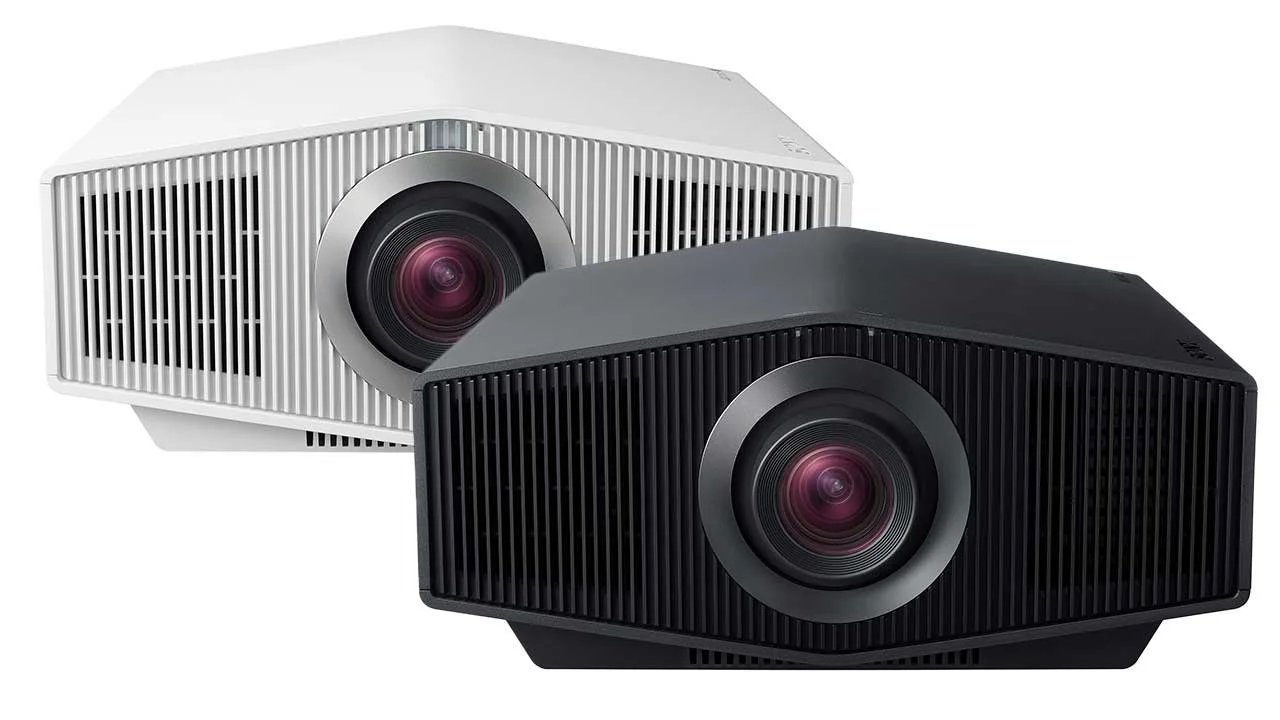Sony BRAVIA Projector 7 (VPL-XW5100ES) — Overview
Positioning & Pricing
Price: $9,999.99
Position: Mid-tier in Sony’s 4K SXRD lineup, between VPL-XW5000ES ($5,999) and VPL-XW6100ES ($15,999)
Release: Summer 2025
Key Features
Brightness: 2,200 lumens via Z-Phosphor laser (200 lumens brighter than XW5000ES)
Display: Native 4K UHD (3840×2160) with 0.61″ 3-chip SXRD panels
Processor: Sony XR Processor for Projector (flagship-level)
Advanced Processing: XR Dynamic Tone Mapping, XR Deep Black, XR TRILUMINOS PRO (over 1 billion colors), XR Clear Image
Gaming: Supports 4K@120Hz (HDMI 2.1), low input lag (~12-23ms), Auto Low Latency Mode (ALLM)
Lens: Manual zoom (1.6:1), lens shift (vertical ±85%/+80%, horizontal ±33%), corner keystone correction
Aspect Ratio: New aspect ratio scaling mode for easy 16:9 ↔ Cinemascope switch without lens adjustments
Smart Integration: Compatible with Control4, Crestron, Savant, AMX; supports remote management via OvrC and Domotz
Laser Life: Rated 20,000 hours
Noise: Quiet operation at 24 dB fan noise
Colors: Available in black and white chassis
Performance Highlights
Picture Quality:
Excellent native 4K sharpness and accurate colors, natural skin tones
Near-infinite dynamic contrast (native contrast ~16,000:1, dynamic contrast ~350,000:1 with laser modulation)
Superior black levels, nearly rivaling JVC DILA projectors
Great HDR performance with frame-by-frame dynamic HDR tone mapping
Covers ~95% DCI-P3 color gamut, natural and lifelike HDR colors
Brightness:
Measured 2,164 lumens in Bright TV mode (close to rated 2,200 lumens)
Approximately 194 nits on a 100” 1.1 gain screen
Bright enough for HDR on screens up to ~135 inches in controlled lighting
Color & Calibration:
Excellent out-of-the-box color accuracy (Delta E < 2)
Multiple calibrated picture modes: User, Cinema Film 1 & 2, Reference
HDR modes include Filmmaker Mode, IMAX Enhanced, HDR Dynamic, and recommended Cinema Film 2 for best HDR tone mapping
Simple calibration improves color accuracy further, though most users won’t need it
Gaming:
HDMI 2.1 inputs for 4K 120Hz gaming
Low input lag (12-23 ms depending on resolution) ideal for console and PC gaming
ALLM supported for automatic low latency switching
Installation & Usability
Manual lens (no motorized zoom/focus)
Large lens shift and zoom allow flexible setup and replacing older projectors
Corner keystone correction helps image alignment (digital correction slightly impacts quality)
New aspect ratio scaling aids switching between 16:9 and Cinemascope formats without lens moves
Backlit, full-featured remote with direct access to picture presets and advanced settings
No built-in streaming apps (designed for external high-quality sources)
Supports major smart home and automation systems for integration
Pros & Cons
| Pros | Cons |
|---|---|
| Native 4K resolution and sharp SXRD panels | No motorized lens or lens memories |
| Excellent color accuracy and contrast | Brightness limited in very bright rooms |
| Advanced XR processing enhances HDR and SDR | No 3D support |
| Low input lag and HDMI 2.1 for gaming | No built-in streaming apps |
| Flexible installation with lens shift and zoom | |
| Quiet operation |
Comparison to Competitors
| Model | Brightness | Lens | Contrast | Gaming Input Lag | Price |
|---|---|---|---|---|---|
| Sony BRAVIA 7 | 2200 lm | Manual zoom/shift | 16,000:1 native | ~12-23 ms | $9,999.99 |
| JVC DLA-NZ700/RS2200 | 2200 lm | Motorized w/mem | Higher native | Comparable | $9,999 |
| Epson QB1000 | 3300 lm | Motorized w/mem | Lower native | Higher | $7,999 |
Sony BRAVIA 7 excels in color accuracy, contrast, and cinematic image quality.
JVC offers motorized lens and HDR10+ but is pricier.
Epson is brighter but uses pixel-shifted 1080p panels and delivers less sharpness.
Summary
The Sony BRAVIA Projector 7 (VPL-XW5100ES) is a premium, native 4K home theater projector offering superb image quality with excellent color accuracy, contrast, and advanced HDR processing. Its laser light source provides stable brightness and long life. It’s also optimized for gaming with HDMI 2.1 and low input lag. Though lacking motorized lens features and 3D support, it delivers a highly cinematic experience ideal for serious home theater enthusiasts who want high performance under $10,000.
Sony BRAVIA Projector 7 (VPL-XW5100ES) – SPECIFICATIONS

BRAVIA Projector 7 (VPL-XW5100ES) Specifications
Price: $9,999.95
Type of Display: 3-chip 0.61-inch SXRD
Resolution:
Displayed: 3840 x 2160 pixels (4K)
Native: 3840 x 2610 pixels
Brightness: 2300 lumens
Light Source: Z-Laser Phosphor
Contrast Ratio: Infinite (dynamic)
Lens Throw Ratio: 2.14:1
Zoom & Focus: Powered zoom and focus
Lens Shift:
Vertical: +/- 85%
Horizontal: +/- 36%
Interchangeable Lens: No
Ultra Short Throw: No
Aspect Ratio: 16:9 widescreen
Supports HDTV and 4K: Yes
3D Support: Yes, active 3D
Speakers: Two 12-watt DTS-X speakers
Noise Level: 26 dB
Low Lag for Gaming: Yes, 12ms at 4K/120fps
Smart Features: No
For Business or Classroom Use: No
Portable: Yes
Special Features: IMAX Enhanced, Dynamic HDR Tone Mapping
Networking: RJ45 LAN port
Size: 18.1 x 8.3 x 20.3 inches (460 x 210 x 517 mm)
Weight: 31 lbs (14 kg)
Warranty: 1-year limited